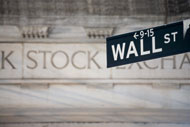Many news reports about the current global credit crisis and its large, institutional victims have compared it to a hurricane. But several Wharton professors suggest that the better analogy might be an ill-constructed levee, filled to the brim with bad debt and breaching under the pressure of massive over-leveraging.
Despite government rescues of Fannie Mae, Freddie Mac and insurance giant AIG over a 10-day period that may change the world of finance, the flood of bad debt will not subside anytime soon, according to four Wharton professors who took part in a panel this week on the still-unfolding financial crisis. Indeed, Washington Mutual is said to be seeking a buyer after writing down almost $15 billion in assets and watching its market capitalization tumble from $31 billion in October 2007 to just under $3 billion as of September 12, according to a report in the New York Times. Likewise, Wachovia’s market cap plunged in the same period, from $98 billion to $31 billion, with the bank writing down nearly $23 billion of assets. Citigroup’s corresponding numbers are even more dramatic.
The rescues, bankruptcies and dizzying write-downs signal a reckoning for Wall Street wizards who engineered the credit crisis with opaque securities based on risky subprime home loans and the assumption that housing prices would never decline.
“The market was primed for subprime,” said Jeremy Siegel, a professor of finance at Wharton who sat on the panel. The pattern of ever-lowering interest rates, often laid at the feet of Alan Greenspan’s Federal Reserve but helped along by international monetary pressures, arose from the tech stock bubble of the late 1990s, Siegel noted. “It made people very hungry for yield. With home prices rising” — and a cursory look at 75 years of data shows no period when housing prices declined, several panelists pointed out — “people suddenly thought, ‘Well, let’s go to the mortgage market.'”
By the time it was evident that things had gone horribly wrong, Siegel added, investment banks “were all masking the decline and didn’t want to admit the loss.” Siegel was joined on the panel by Wharton finance professors Franklin Allen and Richard Herring, and Joseph Gyourko, chairman of Wharton’s real estate department.
Even when the housing bubble started to burst in 2007, some banks figured the values of the housing-related securities were at or near the bottom and continued to hold them. At the same time, the institutions were becoming increasingly leveraged — with debt-to-equity rates of “20 to 1, 30 to 1, or even 40 to 1,” Siegel said. “They double-downed” rather than selling off the risky under-performing loans when they could have.
“The liquidity capacity of these markets was overwhelmed,” agreed Allen. Trafficking in that kind of “risky arbitrage” sent prices down further than it was thought possible, and not just on triple-A rated tranches of subprime securitizations. In July, Allen noted that triple-A rated commercial mortgage-backed securities fell to record low levels (eclipsed yet again this week, according to several online CMBS databases). The market for credit default swaps foundered, and “co-movement” on other debt instruments “spiked dramatically. The interbank markets froze.”
It wasn’t until this March “that we started to see failures,” Allen added. “The Fed probably did the right thing with Bear Stearns [by] playing it safe. What they were worried about was contagion risk.” Lehman Brothers, on the other hand, was “allowed” to fail in mid-September because the Fed, which in the meantime had become much more familiar with the investment banks’ overall exposure, felt that the contagion risk in this case was too low to warrant intervention.
‘A Shotgun Marriage’
As financial institutions failed, were sold or bailed out by the federal government, some of Wall Street’s other big names were lining up to learn their fates. Indeed, even as the Wharton panel was meeting, news media announced that American International Group (AIG) was thrown an unprecedented $85 billion lifeline by the Federal Reserve in exchange for 80% of the company’s assets.
This occurred just days after Lehman declared bankruptcy and Merrill Lynch was sold to Bank of America to prevent the same fate. It followed an earlier move by the government to take control of the federally chartered mortgage firms Fannie Mae and Freddie Mac, and it came just months after Bear Stearns was forced into what Herring called “a shotgun marriage” with JP Morgan Chase.
That deal, brokered in another hastily arranged weekend series of emergency sessions, “put $29 billion of taxpayer money at risk in a very un-transparent way,” Herring said. The federal government “made this incredible break with its past,” and did so using the kind of special purpose entity that brought down firms like Enron and WorldCom earlier in the decade. It may have stabilized markets in the short run, he said, but in effect, it created yet more of a “moral hazard.” In Lehman’s case, he noted, “The moral hazard was that Lehman didn’t fully believe the government would let them go [into bankruptcy], and they had good reason to not believe it.”
In the months between Bear Stearns’ fire sale and Lehman’s bankruptcy, the panelists agreed it had become clear that the major investment banks were massively overleveraged — laden with bad debt via convoluted products that allowed for increased securitizations and dangerous off-balance-sheet trading.
Some firms hedged the risks inherent in such trading, even while swimming in the same waters as those that drowned. Goldman Sachs, for instance, is still standing because it had one division that shorted the market for securitized mortgage bonds, specifically to offset the other Goldman Sachs divisions that bought them, Siegel said.
Still, Siegel sees a silver lining. “There’s about a half trillion dollars’ worth of write-downs already embedded in the prices of these financial stocks,” which suggests that financial firms overall are finally being forced to come clean about investments. “We’re seeing a changing of the players,” he added. “There is still a huge demand for financial services. That demand is going to grow, and international flows of credit are going to be bigger than ever…. We are now making transparent what these instruments are worth.”
Putting off the Debacle
Siegel’s comment echoed his opinion piece in the Wall Street Journal the morning of the panel. In acknowledging the turmoil caused by the overleveraging, he noted: “There is good evidence that the worst is over, especially for the commercial banks with access to Federal Reserve credit.”
Gyourko sees it differently. “There are emerging problems on the commercial side [of the real estate market],” he said. After the session, Gyourko shook his head at what he feels is a downward spiraling securities market for commercial real estate. “There are going to be so many banks going under,” he stated. “If I could re-invent myself, I’d be a distressed property fund. You simply can’t get debt in this market.”
According to Gyourko, stock prices for real estate investment trusts are suffering, too. But his fears for the CMBS market are well-grounded. AIG, for example, could be forced to sell off assets at a time when CMBS demand is practically non-existent. The insurer owns in excess of $21 billion of CMBS.
As for the residential side, he noted that the excess supply of new homes continued throughout 2007. “The excess supply will wear off by the end of 2009, but not before…. The end of this debacle keeps getting put off and put off.”
Certain markets hardest hit by subprime loan proliferation, such as Las Vegas, Nev., Phoenix, Ariz., and Miami, Fla., which have seen “unprecedented price drops … will grow their way out of it, but it is not a 2009 solution,” Gyourko noted. Not so well reported are the default rates of the prime mortgage market. People “who played by the rules, who paid 20% or 10% down on their homes, are losing value and are saying, ‘Do I want to really pay this?’ And that is really scaring people.”
There is plenty of blame — and plenty of worry — to go around. “I think the real risk is overseas, particularly in Europe,” said Allen. He foresees potentially enormous problems with “big banks in small countries,” such as Belgium and the Netherlands. “Fortis [Bank] will come under scrutiny in the next few weeks,” he noted, referring to a Belgian-Dutch bank which saw profits for the first half of 2008 fall by 41% compared to the same period of 2007, according to a recent report from the BBC. The performance was blamed on the crashing global credit markets and the bank’s own bad loans.
That might turn out to be a blip if things turn sour for Switzerland’s two big banks, UBS and Credit Suisse, he suggested, adding that the value of the assets held by those banks is six times the gross domestic product of their home country. “If they have a big problem, the Swiss government cannot bail them out.” And If Swiss banks — traditionally conservative safe havens for international finance — hemorrhage, a cascade effect across the global markets could have implications that are impossible to assess. Said Allen: “Hopefully it won’t happen. But that’s the worrying thing.”



